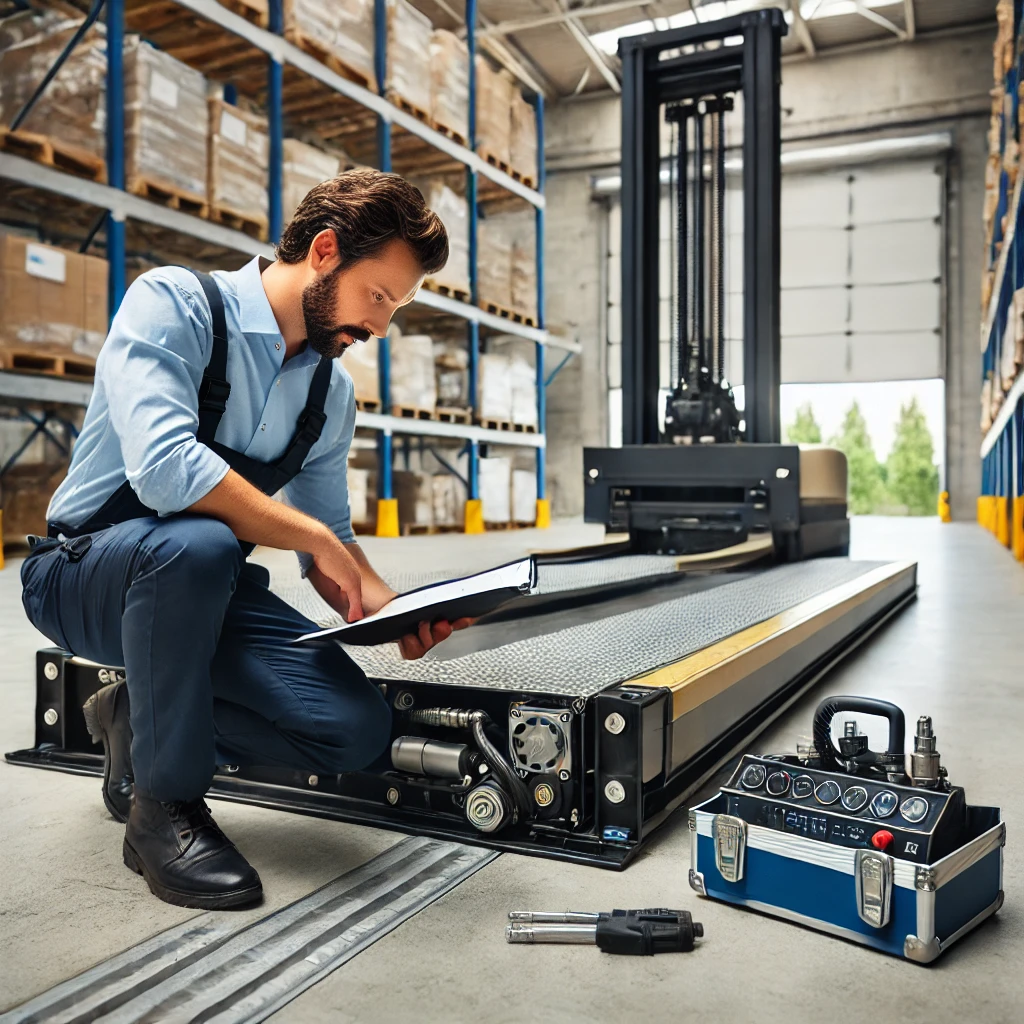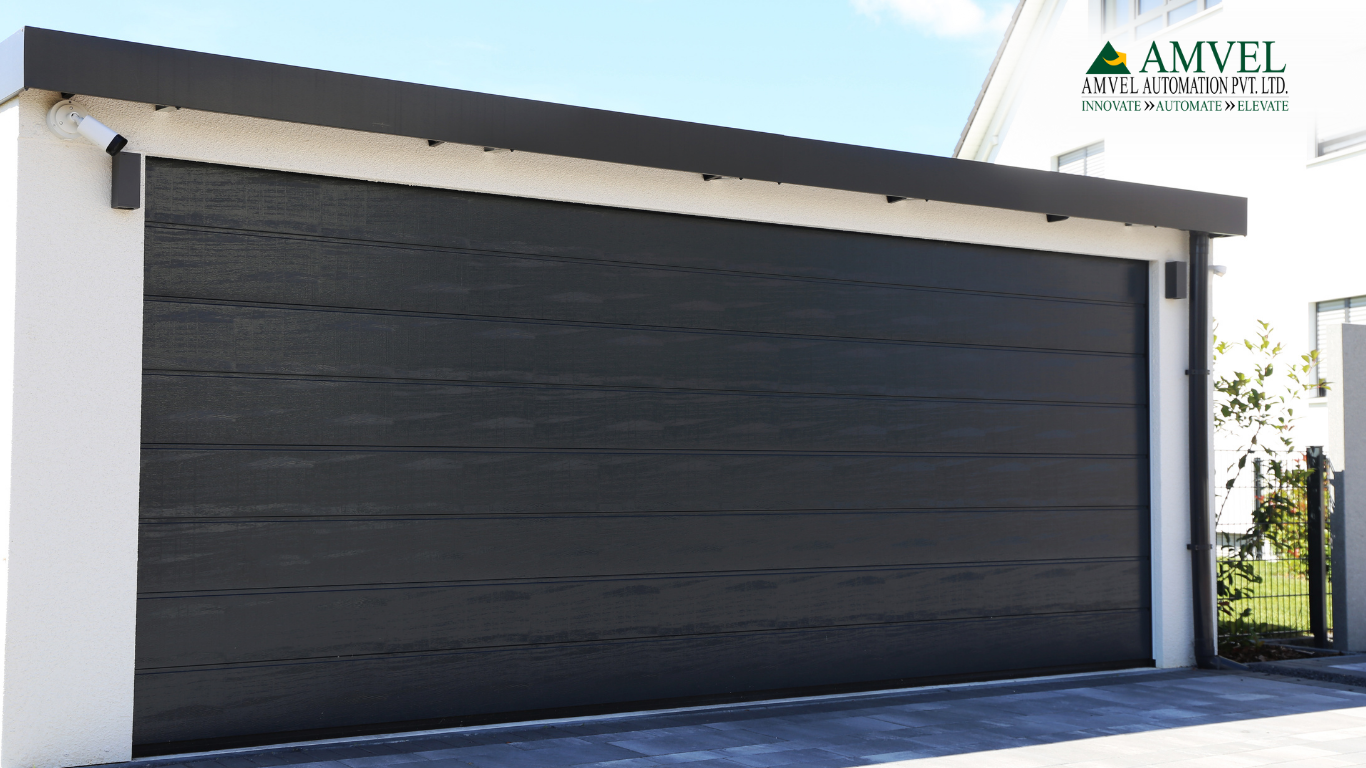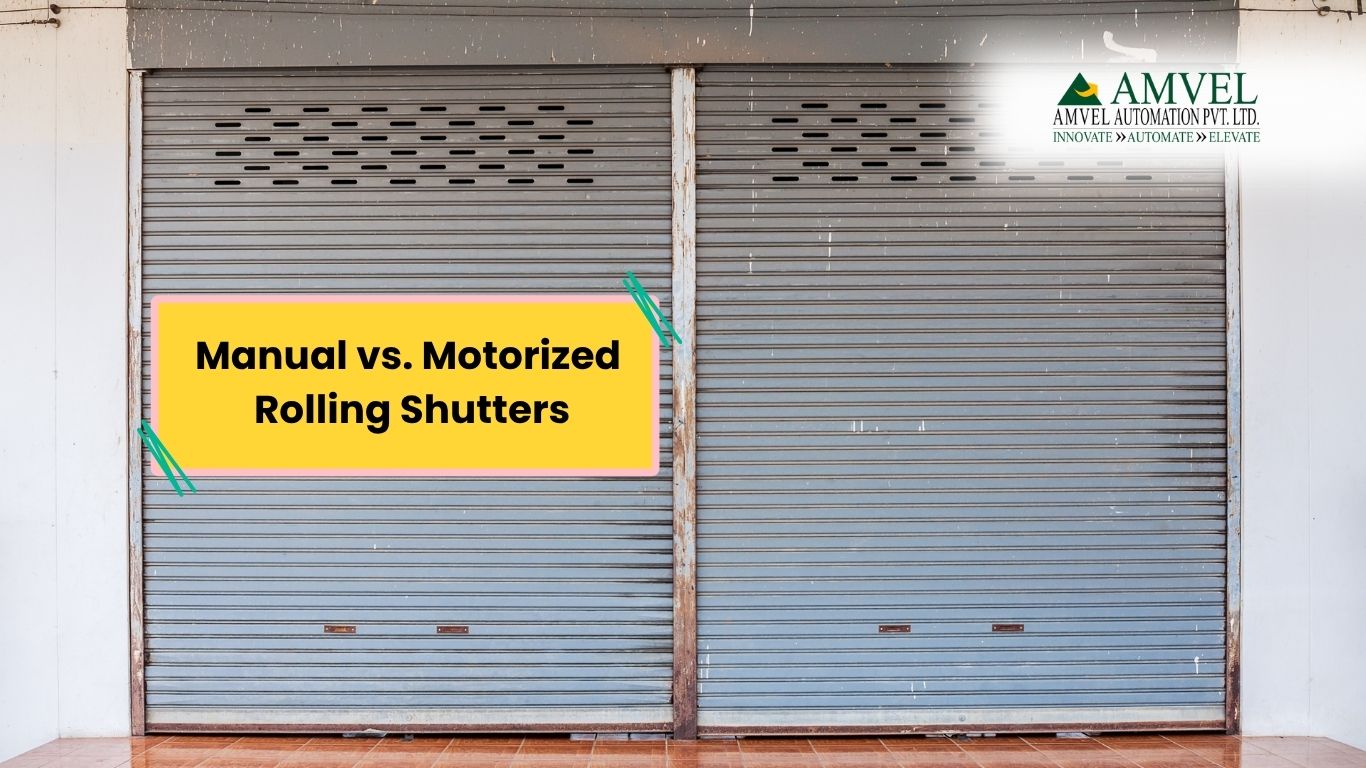Table of Contents
Toggle Understanding Hydraulic Dock Levelers
Understanding Hydraulic Dock Levelers

Hydraulic dock levelers are sophisticated loading dock solutions that harness hydraulic power to create a seamless bridge between warehouses and trucks. These advanced systems offer numerous advantages for modern logistics operations, enhancing efficiency and safety.
At its core, a hydraulic dock leveler comprises a robust steel platform that can be elevated and lowered using hydraulic cylinders. The leveler features an extendable lip that bridges the gap between the dock and the truck bed. This innovative design allows for effortless adjustment to accommodate various truck heights, ensuring smooth transitions for forklifts and other material handling equipment.
Key features of hydraulic dock levelers include:
- Push-button operation for effortless activation
- Fully powered raise and lip extension functions
- Minimal maintenance requirements compared to mechanical alternatives
- Enhanced safety features such as velocity fuses to prevent free-fall
Hydraulic dock levelers are available in various capacities, typically ranging from 25,000 to 120,000 pounds, to accommodate different warehouse and distribution center requirements. Their durable construction and advanced features make them an optimal choice for facilities aiming to streamline their loading and unloading processes.
Key Components of Hydraulic Dock Levelers
To fully appreciate the functionality of hydraulic dock levelers, it’s essential to understand their key components. These elements work in concert to create a safe and efficient loading solution:
- Hydraulic cylinders: These power the raising and lowering of the deck as well as the extension of the lip. A typical configuration includes one cylinder for the main platform and another for the lip.
- Steel deck and lip assembly: Constructed from heavy-duty steel, often featuring a non-slip surface. The lip extends to bridge the gap between the dock and truck.
- Hydraulic power unit: Houses the motor, pump, and hydraulic fluid reservoir to power the cylinders. It may be individual or serve multiple dock levelers.
- Control panel: Contains the push-button controls and electrical components for seamless operation.
- Safety features: Incorporates velocity fuses in the cylinders to prevent free-fall, folding or sliding toe guards, and optional barrier lips.
 The structural elements of a hydraulic dock leveler typically include a four-sided box construction for enhanced durability, I-beam supports under the deck plate, and piano-style hinges for smooth operation. Rubber bumpers are also usually integrated to protect both the dock and trucks during the loading process.
The structural elements of a hydraulic dock leveler typically include a four-sided box construction for enhanced durability, I-beam supports under the deck plate, and piano-style hinges for smooth operation. Rubber bumpers are also usually integrated to protect both the dock and trucks during the loading process.
When analyzing leveller diagrams or dock leveler images, it is crucial to identify these key components to comprehend how they contribute to the overall functionality and safety of the system. This understanding forms the foundation for appreciating the numerous benefits of hydraulic dock levelers.
Benefits of Using Hydraulic Dock Levelers
The advanced design and robust construction of hydraulic dock levelers translate into significant advantages for warehouse and distribution center operations. These benefits directly impact productivity, safety, and long-term cost-effectiveness:
- Effortless operation: Push-button activation eliminates manual effort, boosting productivity and reducing the risk of worker injuries.
- Enhanced safety: Features such as velocity fuses, toe guards, and non-slip surfaces significantly improve workplace safety standards.
- Durability: Robust construction with structural steel and a four-sided box design ensures long-term reliability and performance.
- Versatility: Capability to handle a wide range of capacities, typically from 25,000 to 120,000 pounds, accommodating various loading requirements.
- Low maintenance: Fewer mechanical parts compared to other leveler types result in reduced maintenance requirements and associated costs.
- Smooth operation: Hydraulic systems provide consistent performance even with frequent use, ensuring efficient loading and unloading processes.
These benefits contribute to increased operational efficiency, improved safety standards, and overall productivity in loading dock operations. By selecting the appropriate hydraulic dock leveler, businesses can optimize their logistics processes and create a safer working environment for their employees. However, to fully realize these advantages, proper installation and maintenance are crucial.
Installation and Maintenance of Hydraulic Dock Levelers
The performance and longevity of hydraulic dock levelers heavily depend on correct installation and regular maintenance. Facility managers should be aware of the following key considerations:
Installation
The installation process typically involves:
- Precise pit preparation to accommodate the dock leveler dimensions
- Careful alignment and leveling of the leveler within the pit
- Professional electrical connections for the control panel and hydraulic power unit
- Proper setup of the hydraulic system, including filling and bleeding
- Thorough operational testing before commissioning the leveler
Maintenance
Regular maintenance tasks should include:
- Daily visual inspections for signs of damage or wear
- Checking and replenishing hydraulic fluid levels as needed
- Lubricating hinges and other moving parts according to manufacturer specifications
- Inspecting and tightening all bolts and fasteners
- Cleaning the pit area to prevent debris accumulation
- Testing safety features such as velocity fuses and toe guards


It is recommended to have hydraulic dock levelers professionally serviced at least annually. This typically involves a comprehensive inspection of all components, hydraulic system analysis, and calibration of control systems.
By adhering to proper installation procedures and maintaining a regular maintenance schedule, facility managers can ensure their dock levelers provide years of reliable service, enhancing safety and productivity in loading dock operations. With these considerations in mind, the next step is to select the right hydraulic dock leveler for your specific facility needs.
Choosing the Right Hydraulic Dock Leveler for Your Facility
The selection of an appropriate hydraulic dock leveler is a critical decision that can significantly impact your facility’s efficiency and safety. Consider the following factors to make an informed choice:
- Weight capacity: Determine the maximum load your dock leveler needs to handle, considering both cargo and material handling equipment weights.
- Platform size: Ensure the dimensions can accommodate your largest equipment and typical load sizes.
- Lip length: Consider the gap between your dock and typical truck beds to choose an appropriate lip extension.
- Safety features: Look for robust mechanisms such as velocity fuses, toe guards, and non-slip surfaces.
- Structural design: Evaluate the construction quality, including box design and deck support.
- Control system: Consider the ease of operation and available control options.
- Environmental factors: Take into account your facility’s specific conditions, such as climate control or corrosive environments.
By meticulously evaluating these factors, you can select a hydraulic dock leveler that meets your warehouse requirements, enhances operational efficiency, and maintains a high standard of safety for your loading dock operations. This careful consideration will contribute to improved productivity and a safer working environment in your facility.
Maximizing Your Investment in Hydraulic Dock Levelers
Implementing hydraulic dock levelers is a significant step towards optimizing your loading dock operations. To fully leverage this investment:
- Provide comprehensive training to all operators on proper usage and safety procedures
- Integrate the levelers into your overall dock management system for coordinated operations
- Regularly review and update your maintenance schedules based on usage patterns
- Consider energy-efficient models to reduce long-term operational costs
- Stay informed about technological advancements in dock leveler design for future upgrades
 By focusing on these aspects, you can ensure that your hydraulic dock levelers not only meet current needs but continue to provide value and efficiency for years to come. As logistics technology evolves, maintaining a modern and well-maintained loading dock system will be crucial for staying competitive in the fast-paced world of warehousing and distribution.
By focusing on these aspects, you can ensure that your hydraulic dock levelers not only meet current needs but continue to provide value and efficiency for years to come. As logistics technology evolves, maintaining a modern and well-maintained loading dock system will be crucial for staying competitive in the fast-paced world of warehousing and distribution.
For those looking to enhance their loading bay operations with high-quality hydraulic dock levelers, Amvel Automation offers a range of durable and reliable options .Their expertly engineered levelers are designed to withstand heavy loads, provide consistent performance, and minimize maintenance needs, making them an excellent choice for facilities seeking to optimize their loading dock efficiency.
To learn more about how different types of dock levelers can accommodate various truck configurations, check out our article on whether a dock leveler can be used for different types of trucks. This information can be particularly valuable when selecting the most versatile solution for your facility’s needs.



